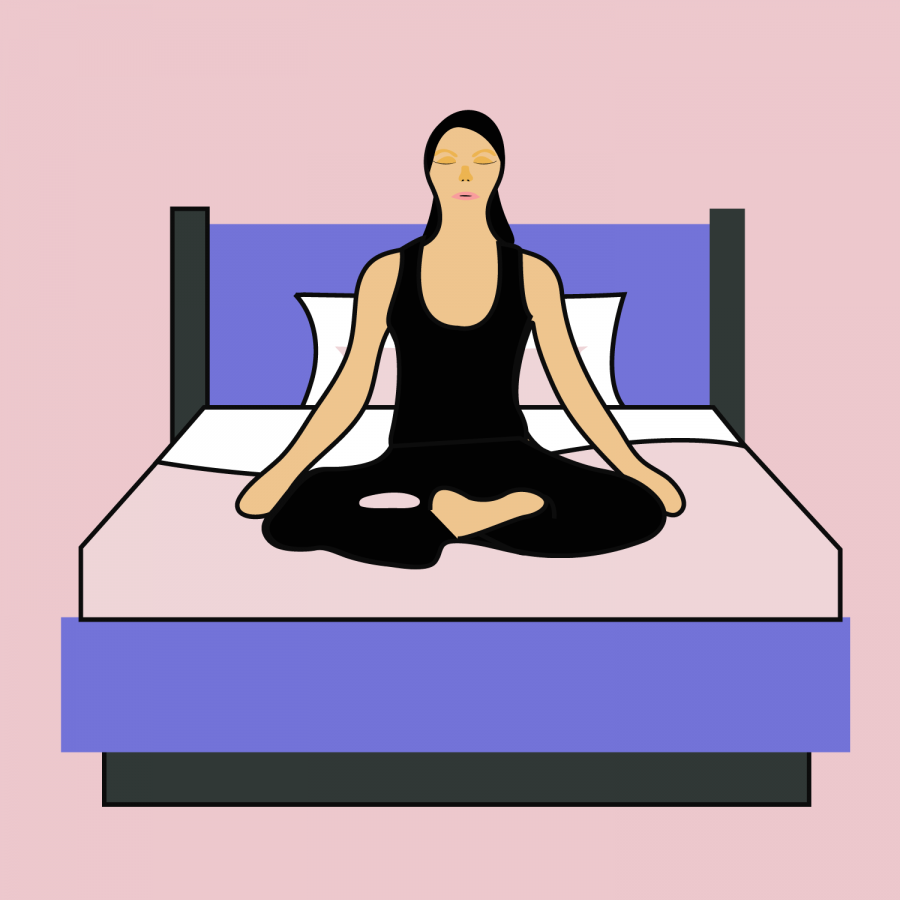Everyone has time to meditate
April 4, 2018
Amid all the stressors in life, everyone needs an escape — because sometimes the uncontrollable aspects of life become overwhelming. In these times of hardship, strengthening your mind can put you back on your feet. If you’re stressed, meditation can be an effective solution.
But how many people make an effort to meditate? Most people I know use the same excuse to avoid it: “I just don’t have any time.” Others express a difficulty in staying focused.
Well, here’s some food for thought; meditation can take only five minutes. A 2014 journal published by Psychoneuroendocrinology confirmed that a few minutes of meditation produces long-lasting neurological effects.
Meditation, also known as mindfulness, isn’t what most people think. Forget about the yoga mats, the sensual music and the Buddhist monks chanting a monotone mantra. You can find inner peace without any of those practices. A better definition of mindfulness is simply being aware of the present moment.
Instead of dwelling on past events or future possibilities, meditation is all about “now.” It’s a chance to sit down and ignore midterms, pending interviews, deadlines and that online quiz you forgot to complete last night.
Get The Daily Illini in your inbox!
The truth is, everyone loves to escape. This explains binge-watching a Netflix series, playing late night basketball or attempting another ten rounds of Fortnite. Meditation is simply another approach to access this mental vacation.
There are no specific rules or procedures involved in meditation; Mayo Clinic lists a number of ways one can attain inner peace. They emphasize the importance of controlled breathing, focused attention and an open mind. For example, mantra meditation refers to focusing on a calming phrase or word. Mindfulness meditation is a method in which you focus on deep breathing and allowing your thoughts to come and pass.
For the best experience, try to find a place where you can assume a comfortable seated position. If you choose to meditate in your room, ensure it’s devoid of noise and activity — removing distractions is crucial.
Picture this: You’re enveloped in a forest. Right beside you is a river gently flowing; it carries leaves downstream. Your sole task is to place every transient thought on a leaf and allow it to float out of sight. Try to let your thoughts come and go at their own pace. This popular meditation, known as “Leaves on a Stream,” is simple and peaceful.
As I mentioned before, time restraints are no issue. Start your day with a five minute session immediately after you hit the snooze button. If morning meditation makes you drowsy, try meditating before you sleep at night. Implementing mindfulness into your nighttime routine is more beneficial than absorbing the blue light from your phone.
Our culture frequently praises the benefits of physical exercise; however, what it sometimes fails to address is the advantages of mental exercise. I believe that ignoring one’s state of mind can be detrimental to overall health, and it’s something we, especially as students, should start taking seriously.
Thomas is a freshman in LAS.







